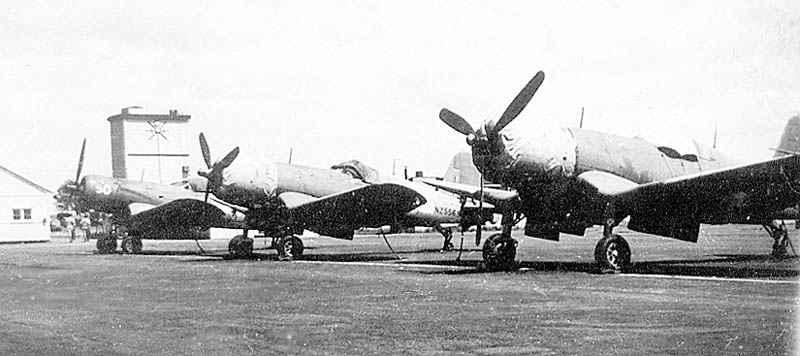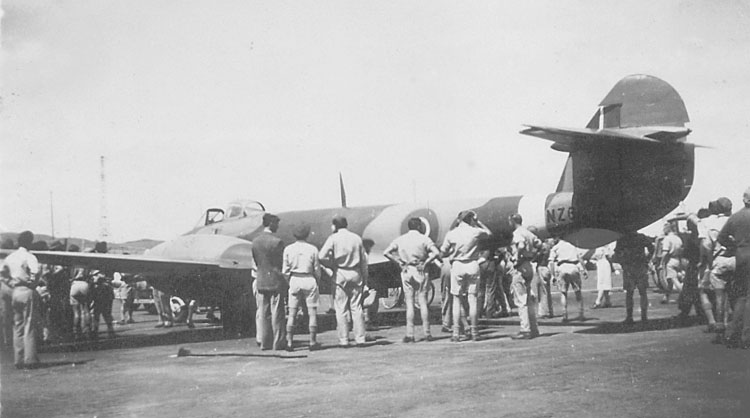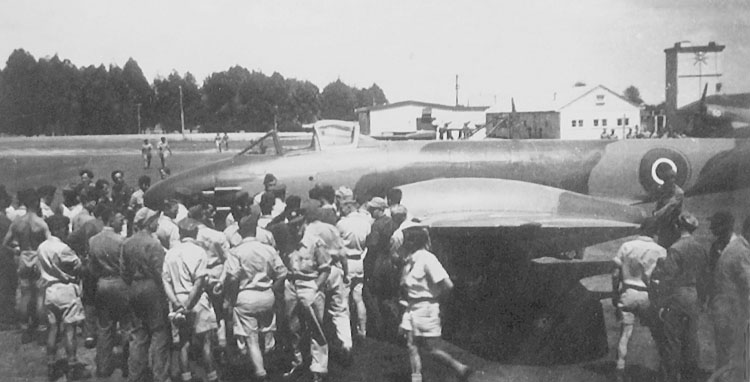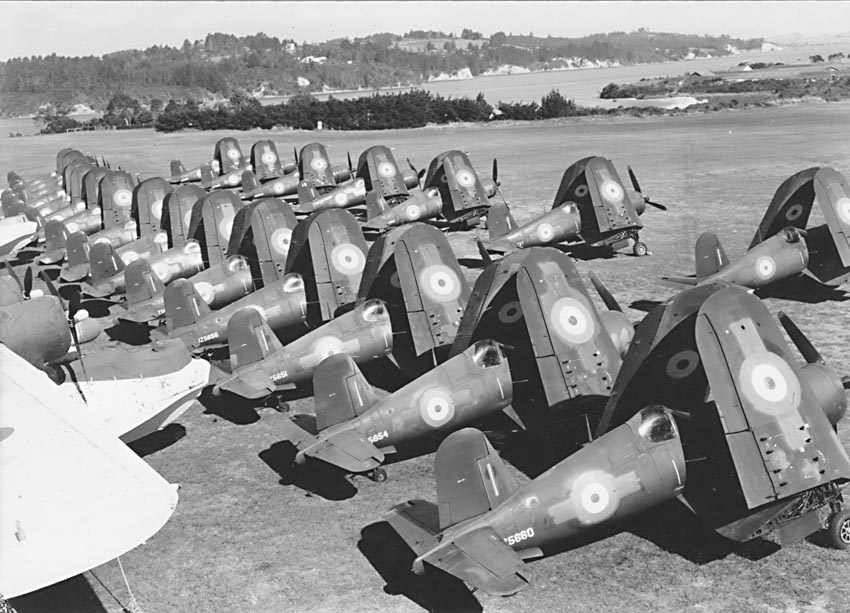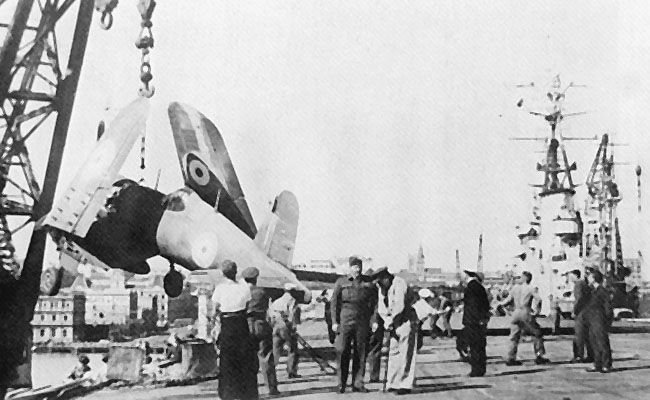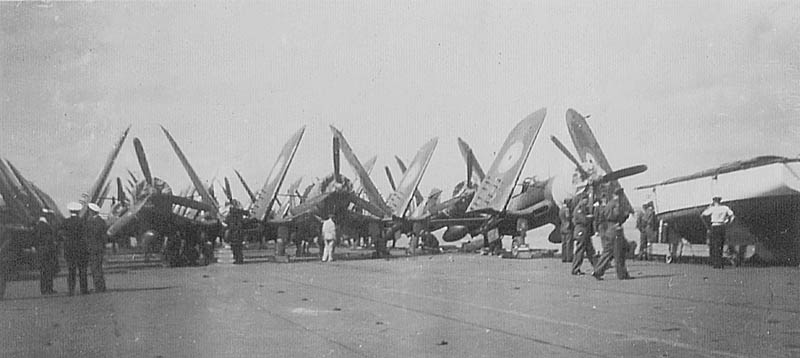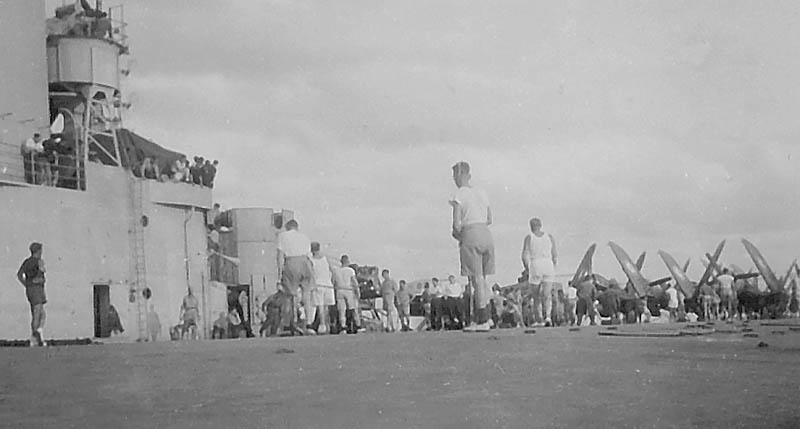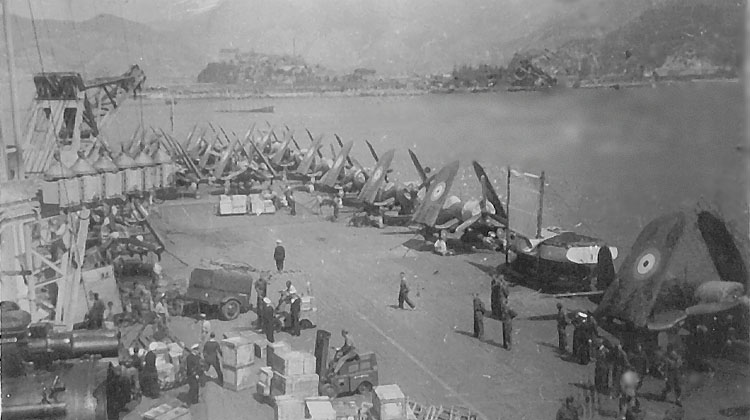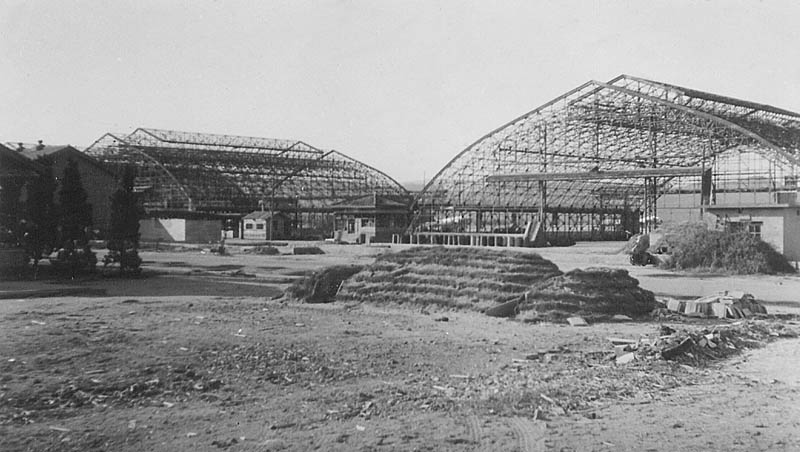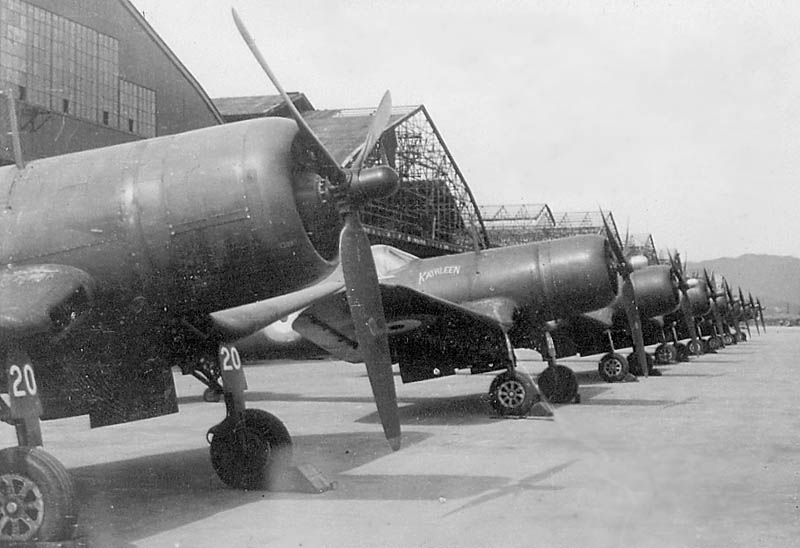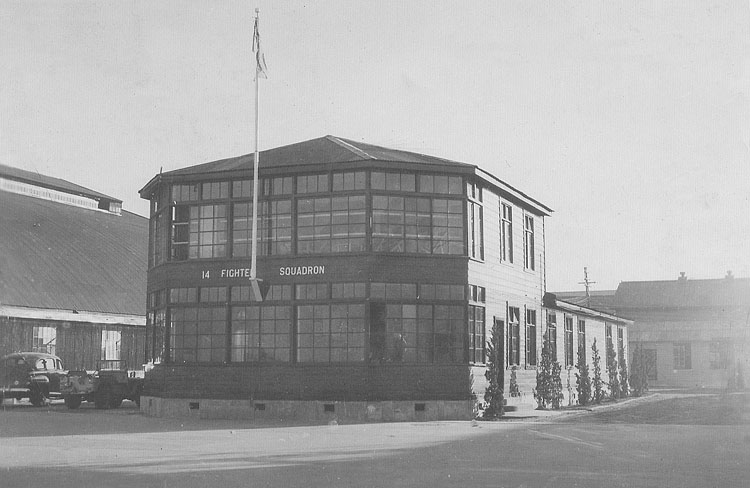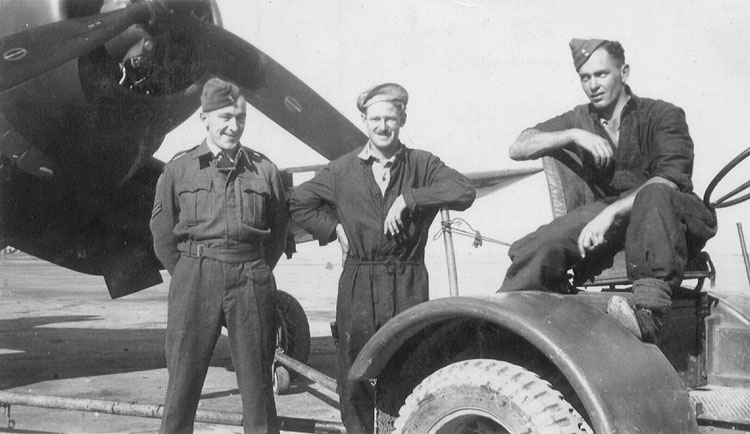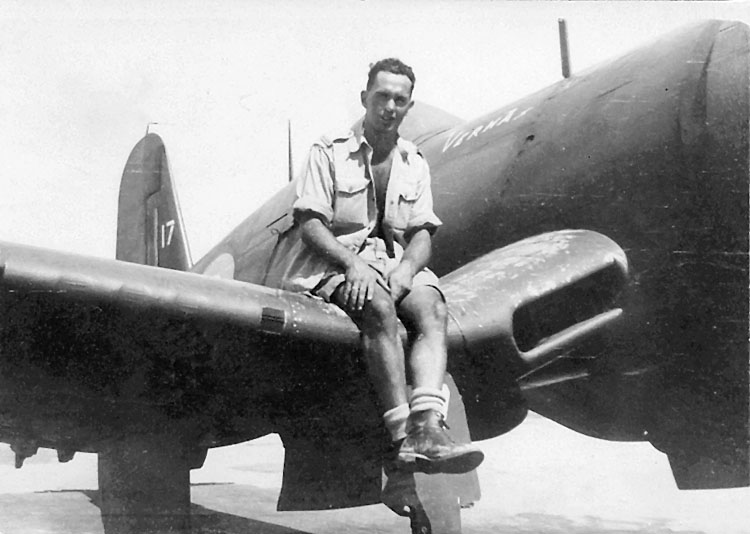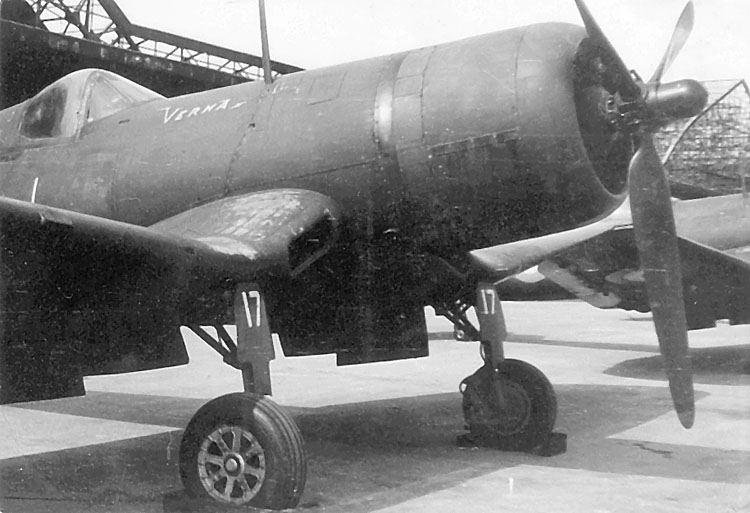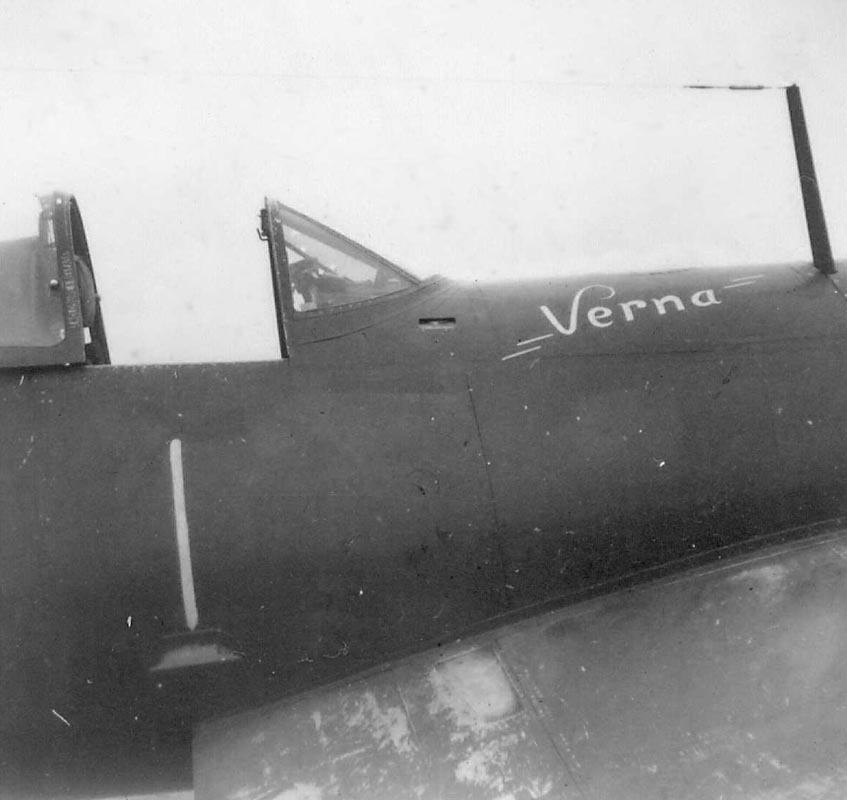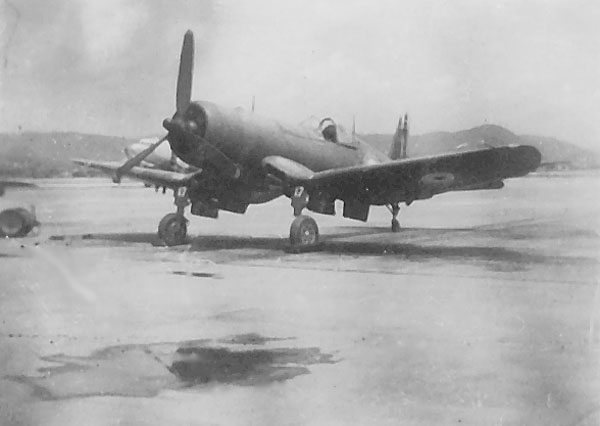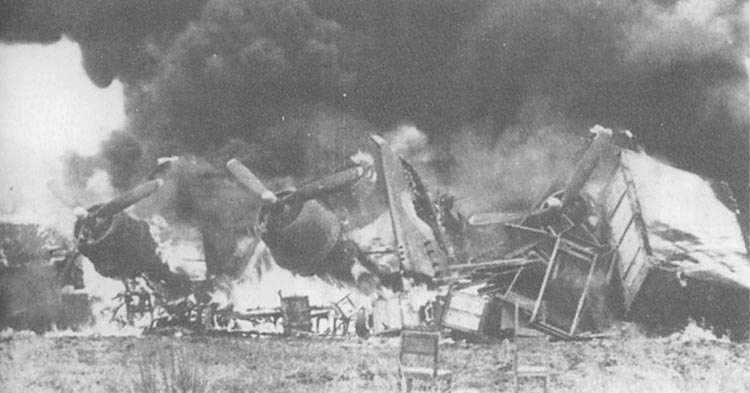|
As part of New Zealand's contribution to the British Commonwealth Occupation Forces in Japan (commonly known in NZ as J Force), No.14 (Fighter) Squadron was reformed at Ardmore Air Base south of Auckland in December, 1945. They were to be a fully self sufficient unit, reverting back to pre-war RNZAF practice. The commanding officer was Squadron Leader J.J. De Willimof, DFC, who had served with distinction in the Pacific, firstly with No.15 Squadron, then after 5 tours of duty, had commanded No.23 Squadron from 1944 to 1945. The Squadron's ground training was put in the capable hands of Squadron Leader J.E.Duncan (known to all and sundry as "The Bull" due to his voice!) who was the Chief disciplinarian of the Air Force. Training for all staff was carried out until early March, 1946.
A diversion during this period, was the arrival and display of the first jet aircraft for the RNZAF, a Meteor F Mk.3 ably presented by Squadron Leader R.M.Mckay. Several of the senior pilots from No.14 and some the staff at Ardmore were also checked out in the aircraft.
24 of the Goodyear built FG-1D Corsairs were selected from the storage depot at Rukuhia, and flown to Hobsonville for any necessary servicing and preparation for the task ahead. The white barred wartime roundels were overpainted, and type "Aii" blue/white/red roundels were applied in their place. The narrow RNZAF type fin flashes were retained. Serials were white, except for NZ5617 which retained a black serial. These aircraft were: NZ5614, NZ5615, NZ5617, NZ5620, NZ5622, NZ5625, NZ5626, NZ5628, NZ5632, NZ5635, NZ5636, NZ5637, NZ5639, NZ5643, NZ5647, NZ5649, NZ5651, NZ5652, NZ5653, NZ5654, NZ5655, NZ5656, NZ5659, and NZ5660.
On February 26th, they began to be loaded on barges for the short trip down the Waitemata Harbour to the Auckland wharves where the Royal Navy's light fleet carrier HMS Glory was due to berth on the 2nd of March. The loading was completed (after a minor mishap when one aircraft went through the rotten deck of one of the scows being used!) early in the morning on the 7th of March.
That day, the Squadron paraded down Auckland's Queen Street to the wharves, and embarked on HMS Glory for the trip to Japan. Their vehicles and enough supplies for a full year (apparently 10.000 condoms were included with the medical supplies!), had previously been loaded onto HMS Glory along with their aircraft.
Glory sailed on March 8th, and was seen off by a flight of Corsairs from Ardmore, and later the same day, the Meteor flew past inverted below the level of the flight deck!
During the voyage, a full programme of physical and general training was carried out. Parade ground drill was also attempted, but was soon abandoned due to the motion of the ship causing some unforeseen and hilarious maneuvers to occur! After an uneventful trip (other than the unfortunate death of one of the RN sailors who drove a small tractor over the edge of the elevator), they moored in the Harbour of the Kure Naval Base on 25th of March.
Many of the ground crew and several of the pilots then left by vehicle for Iwakuni via the wrecked city of Hiroshima, and their photo albums bear testimony to the destruction wreaked there by the atomic bomb. They arrived at Iwakuni to find that much of the corrugated iron had been stripped from the almost brand new hangers for use as building materials to house the homeless at Hiroshima.
Two days later, the Glory left Kure and sailed past Hiroshima to moor off the Japanese Naval Air Station of Iwakuni. The pilots were hoping to fly the aircraft off the carrier, but due to the Engineering Officers report on the condition of the Corsairs after being stowed on the open deck, and the landing strip at Iwakuni still being full of bomb craters, this was soon discouraged, and the aircraft were off-loaded onto barges then ferried ashore.
The task set for No.14 Squadron was to patrol the Inland Sea, and the lower Sea of Japan to observe shipping, discourage communist insurgents and illegal immigrants crossing over from Korea, carry out co-operation flights for the NZ Army contingent based at Chofu, observe that no banned activities such as military style parades were being carried out at schools, and to monitor and discourage illegal goods being shipped across from China and Korea for the flourishing "Black Market". They were also designated the Headquarters Squadron of the British Occupation Forces in Southern Japan, which meant they had to arrange and lead any fly pasts for ceremonial purposes as required. On one of these, it is related that the accompanying RAAF Mustang Squadron, No.92 based at Bofu, took station alongside the aircraft of 14 Squadron, and it was noticed that all the Australian pilots were wearing straw boater hats! Each of the pilots was allocated his 'own' aircraft, and each aircraft was allocated it's own airframe and engine mechanics. My Father was given NZ5617 to look after, which soon had the name 'Verna' painted on the starboard upper cowling.
Judging by the photos in my Father's album, the iron was soon replaced on the hangers, and the full activities of a RNZAF station were soon underway. As a major Japanese Naval Air training Base, Iwakuni was apparently well endowed with facilities, including a full sized Olympic length swimming pool! The ground crews and NC0's were housed in a large square two storied barrack block which faced onto a central courtyard.
In April, 1947, there was a change in command, as Squadron Leader De Willimof returned to New Zealand, and the command of No.14 was assumed by Squadron Leader D. F. St. George. Many of the original squadron members were gradually rotated back to New Zealand during the year (including my father). Most returned on the weekly shuttle being provided by No.41 Squadron's C-47's. This flight was usually routed via Okinawa, Manila, Morotai, Darwin, Brisbane, Norfolk Island then Auckland. In February 1948, the squadron moved to Bofu to replace the Australian Fighter Wing, and resumed their surveillance role. By August, flying was being gradually reduced due to the decision to discontinue their presence in Japan, and the final act was carried out on the 10th of October when all the Corsairs and their support equipment which were no longer needed in New Zealand, were heaped up and torched at the edge of the airfield at Bofu. The remaining 206 personnel were returned to New Zealand on the liner SS Westralia, arriving back in Auckland on the 11th of December.
During their tour of duty, one aircraft was destroyed and the pilot killed in a take off accident (NZ5635 on 20/04/46). One aircraft was damaged and written off due to an undercarriage malfunction. Pilot unhurt. (NZ5617 on 9/05/47). One aircraft was damaged and written off due to an undercarriage malfunction at Miho. Pilot unhurt. (NZ5637 on 26/06/47). One aircraft was destroyed in a landing incident. Pilot slightly injured. (NZ5651 on 21/01/48). One aircraft was damaged and written off due to engine failure after takeoff. Pilot unhurt (NZ5644 0n 28/01/48).
|
